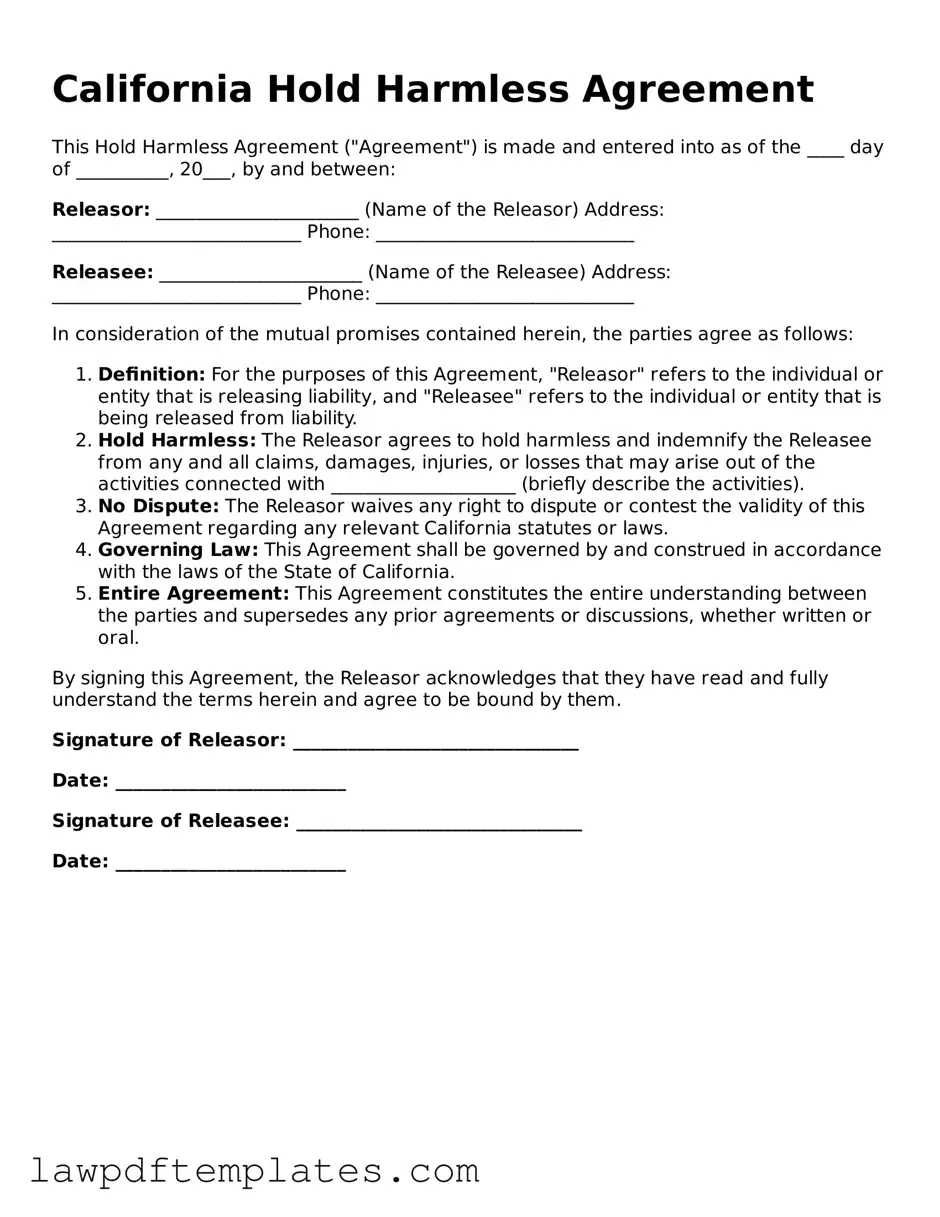California Hold Harmless Agreement
This Hold Harmless Agreement ("Agreement") is made and entered into as of the ____ day of __________, 20___, by and between:
Releasor: ______________________ (Name of the Releasor)
Address: ___________________________
Phone: ____________________________
Releasee: ______________________ (Name of the Releasee)
Address: ___________________________
Phone: ____________________________
In consideration of the mutual promises contained herein, the parties agree as follows:
- Definition: For the purposes of this Agreement, "Releasor" refers to the individual or entity that is releasing liability, and "Releasee" refers to the individual or entity that is being released from liability.
- Hold Harmless: The Releasor agrees to hold harmless and indemnify the Releasee from any and all claims, damages, injuries, or losses that may arise out of the activities connected with ____________________ (briefly describe the activities).
- No Dispute: The Releasor waives any right to dispute or contest the validity of this Agreement regarding any relevant California statutes or laws.
- Governing Law: This Agreement shall be governed by and construed in accordance with the laws of the State of California.
- Entire Agreement: This Agreement constitutes the entire understanding between the parties and supersedes any prior agreements or discussions, whether written or oral.
By signing this Agreement, the Releasor acknowledges that they have read and fully understand the terms herein and agree to be bound by them.
Signature of Releasor: _______________________________
Date: _________________________
Signature of Releasee: _______________________________
Date: _________________________
